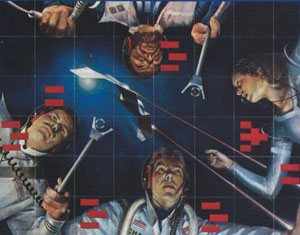|
|
Atari 5200 Prototypes
|
|
Launched in 1982, the Atari 5200 was Atari's follow up to the wildly successful Atari 2600. Originally designated the Video System X (VSX), Atari briefly considered the name P.A.M. (Personal Arcade Machine) which also happened to be the 5200's internal codename. However in the end Atari settled on the Atari 5200 Super System since marketing wanted customers to think it was twice as powerful as the 2600 (2600 + 2600 = 5200). Atari would use this logic again when they unveiled the Atari 7800 in 1984.
However did you know that the 5200 wasn't meant to be a direct replacement for the 2600? In addition to the 5200 Atari had also been developing another new system dubbed the Atari 3200 (codename Sylvia). The 3200 was to be an enhanced version of the 2600 and serve as a mid-level system with the 2600 and 5200 occupying the low and high ends of the market. However the 3200 (shouldn’t it have been the 3900?) wasn’t coming along fast enough and Atari decided to ditch the three system approach and go with only the 2600 and 5200. Since the 5200 was very similar to the Atari 400 (using most of the same components) its progress had been much faster than the maligned 3200 and was ready in time for its debut in 1982.
If there's one thing the Atari 5200 is famous for (other than its non-centering joysticks) it's for the large number of unreleased prototypes that have been found. Since the 5200's lifespan was cut tragically short by the crash of 1984, many games that were fully or nearly finished went unreleased. This makes for a large number of high quality prototypes, many of which are better than most released games. In fact of the 100 or so known 5200 titles, roughly a fourth of them are actually prototypes. No other system in history has such a high prototype to released game ratio.
On the whole, Atari 5200 prototypes are easier to find than 2600 prototypes, and often sell for much less. This is mainly because the 2600 was a much more popular system, and therefore has more collectors. But while many 2600 prototypes are rough and nearly unplayable, the majority of the 5200's prototype library consists of fully finished games that are a blast to play. This makes the 5200 unique when it comes to prototype collecting (prototypes that are fun to collect AND play). Another thing that makes the 5200 unique is that many of its games are direct ports from (or were directly ported to) the Atari 400 (remember they share the same hardware). This means that many unreleased 5200 games were actually released on the Atari 400/800, and are virtually identical (Although there are some differences). So if you can't afford a 5200 Track & Field or Final Legacy prototype, the Atari 400/800 versions can be found at a much more reasonable price.
When it comes to quality and quantity of prototypes, the 5200 simply can't be beat.

